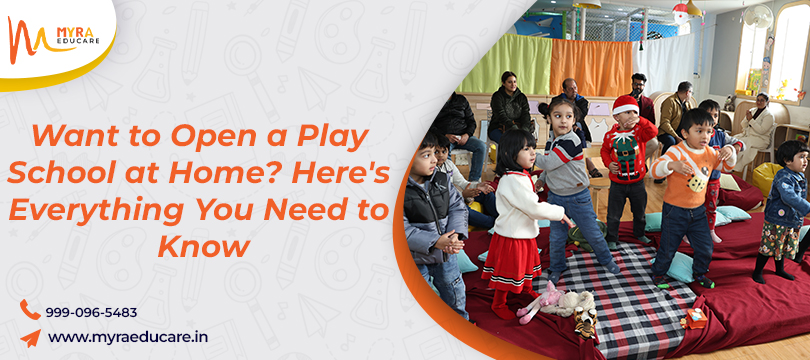
Starting a play school at home is an exciting opportunity for people who are passionate about early childhood education. Opening a preschool isn’t about starting a business; it provides the opportunity to make an impact by guiding young minds during their formative years.
More and more parents now demand high-quality early childhood care and education that provides a stable educational foundation to their children during preschool.
But opening up a play school doesn’t need only a decent space, It will also need careful preparation, knowing the laws and regulations that may apply, as well as an effective business strategy.
Initiating a home preschool involves being aware of the rules, establishing a safe and engaging environment for learning, and developing a curriculum that enhances curiosity and creativity.
Note: It is helpful to understand how a structured curriculum looks when planning a play school at home. Find out more about our programs, such as Toddler , Pre-Nursery, Nursery, LKG, and UKG designed to build the right foundation for early learners to succeed in school.
How To Start a Play School at Home?
A step-by-step guide that helps you find all your answers and solutions before setting up and dealing with a play school at home:
Step 1: Assess your Space and Resources
Before you begin, examine your house carefully to determine whether it is suitable for preschool. Locate a designated space with adequate room for play, activities, and relaxation. Ensure that the area is well-ventilated, child-friendly, and safe. List the things you’ll need to create an enriching environment, including books, art supplies, educational toys, etc.
Step 2: Create a Child-friendly Space
When your home is ready, it’s time to adapt your space to young children's needs and interests. Create distinct spaces for play, arts and crafts, and reading. Use bright colors to create a welcoming atmosphere and pique interest.
Toys and materials should be arranged on low shelves for easy access and to explore them on their own. Additionally, make sure you have a comfortable area where children can rest and take a nap when they need to refuel.
Step 3: Develop an Engaging and Educational Program
Create a curriculum that emphasizes enjoyment and education while promoting children’s overall development. Include play-based activities that help children acquire critical skills through play and make learning fun.
Step 4: Understand Legal Requirements and Obtain Permission
Running a home-based play school requires adherence to local laws and regulations, which is just one aspect of the process. Another is how to start a play school. Check with your local authorities to find out what licenses and permits you’ll need. Make sure you understand health and safety regulations to provide a hygienic and secure environment for the children.
Step 5: Promote your Play School and Attract Parents
Use social media, local community organizations, and word-of-mouth to spread the word about your home-based play school. Make attractive flyers and brochures that highlight the unique features of your play school.
Offer trial classes so parents and children can experience the friendly environment firsthand. Positive feedback from satisfied parents will contribute to your play school’s positive reputation.
Step 6: Be Passionate and Flexible
Managing a home play school requires hard work and flexibility. Keep learning and developing as a teacher while maintaining your passion for early childhood education. Be prepared to adapt your teaching methods to meet the needs of each student and to adapt to any change.
Conclusion
Establishing a play school at home is a fulfilling way to influence young brains. You can deliver high-quality education if you plan carefully, create a child-friendly atmosphere, have a solid curriculum, and follow the law.
You can establish a play school that works for kids and parents by being passionate, adaptable and promoting it well.